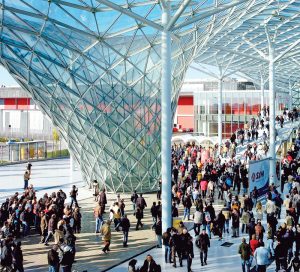
TW Special Report
ITMA 2023 is now in the textile industry’s rear-view mirror, but for exhibiting companies leads, connections and information accumulated during the event are starting points for future business opportunities and ideas for the next generation of technologies.
Textile World recently interviewed just a very small sample of exhibitors that participated in ITMA 2019, held in Milan, Italy, to learn about their experience and get a sense of the overall market for textile investment especially as it relates to the United States.
Responses below were provided by Will Motchar, Navis TubeTex; Hardy Sullivan, Thies Corp.; Rick Stanford, Baldwin Technology Co. Inc.; Gunar Meyer, Monforts; Stefan Engel, American Trützschler; and Thomas Oetterli, Rieter Group.
Responses are in no particular order and have been condensed and edited for clarity.
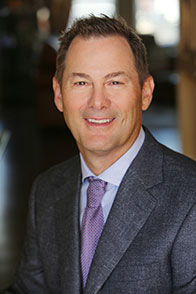 Respondent: Will Motchar, president and CEO of Navis TubeTex, Lexington, N.C.
Respondent: Will Motchar, president and CEO of Navis TubeTex, Lexington, N.C.
TW: Can you comment on the quantity and quality of visitors at your booth during the show, and the countries and regions where the visitors came from?
Motchar: Quantity and quality of visitors was excellent at ITMA. As always, ITMA is a truly global show so we had current and potential customers from around the world. I would say South Asia was very strong, central and south America, and even the U.S. was well represented.
TW:Of the machines/technology your company had on display, what drew the most attention?
Motchar: Our newest acquisition, Gaston Systems foaming technology drew the most attention for us. The technology has been traditionally used for chemical application offering significant benefits in terms of reduced chemical, water, and energy usage. We now have the capability to use the Gaston technology to dye fabrics and even yarn in a continuous process that is far more sustainable than current methods.
TW: Based on customers’ interests and questions during the show, do you see any overarching trends? In your sector, what impact does sustainability have?
Motchar: Well you said it, sustainability is the overarching trend. But customers want and HAVE to have real sustainable solutions, not just hyperbole. Too many suppliers are slapping the word “sustainability” on their newest models when the improvements are miniscule to non-existent.
TW: What is the appetite for investing? Is U.S. interest apparent?
Motchar: Discussions at ITMA were very positive for investment. However, we have not seen actual orders come in as fast as we anticipated following the exhibition. Interest from U.S. customers was very high, but they also have delayed ordering.
TW: Do recent orders point to any evidence of nearshoring and reshoring in the Western Hemisphere?
Motchar: Yes, definitely. There is no denying that we are seeing this happen. Probably a higher degree of nearshoring than reshoring, but both are happening.
TW: Do inflation and higher interest rates create investment headaches? Do you think the United States will avoid a recession?
Motchar: Absolutely. Inflation and high interest rates are a problem. Inflation is killing the lower and middle class buying power. Interest rates obviously play a big role in capital investment decisions. I do not think the U.S. will avoid a recession.
TW: Are there any roadblocks, such as high energy prices, holding manufacturers back from investing in new equipment and technologies?
Motchar: If anything, high energy prices are driving manufacturers to invest in new equipment and technologies that use less energy. The biggest roadblock for investing is uncertainty. Geopolitical and economic conditions are very volatile and unpredictable. That is a bad recipe for investment.
TW: Would you say ITMA 2023 was an overall success for your company?
Motchar: If we see the orders come in that were anticipated following the show it will be an overall success. Nevertheless it was a great opportunity to showcase all the new and exciting products/technologies that we have been working on.
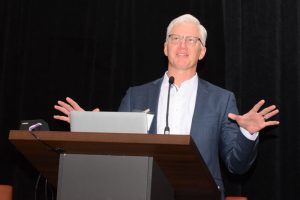 Respondent: Hardy Sullivan, sales, Thies Corp., Rock Hill, S.C.
Respondent: Hardy Sullivan, sales, Thies Corp., Rock Hill, S.C.
TW: Can you comment on the quantity and quality of visitors at your booth during the show, and the countries and regions where the visitors came from?
Sullivan:We were pleased with the traffic in terms of quantity of visitors from the Americas, Europe and India. The lingering effects of Covid probably resulted in a smaller turnout from China. While there weren’t a lot of deals negotiated on-site, some ITMA visits turned into sales. In other cases, however, promising projects have been delayed. Being at ITMA was the right decision but the results have been mixed.
TW: Of the machines/technology your company had on display, what drew the most attention?
Sullivan: Practically every discussion started with Signature Series because of its strong environmental story and low operational cost. It was, literally, the centerpiece of our booth. Being able to prepare and dye cotton without salt in a dye jet is a compelling advancement. Of course, each customer has his own area of interest, so our focus follows the individual need.
TW: Based on customers’ interests and questions during the show, do you see any overarching trends? In your sector, what impact does sustainability have?
Sullivan: For sure, sustainability and digitalization, which is a subset of sustainability, were the overarching trends. Sustainability was our booth’s theme but, more importantly, it has been our engineering mission. To set our story apart, we openly reported metrics that quantify usages of water, materials, and electricity; and we benchmark our values to the next-best offering, not outdated standards.
TW: What is the appetite for investing? Is U.S. interest apparent?
Sullivan: U.S. textile producers tend to evolve capabilities rather than make greenfield, step-change investments in technology or new products.
In the United States there are relatively small but important pockets of customer interest. A few examples of domestically-dyed end-uses include automotive fabrics, military fabrics, and upholstery yarns. Fiber cleaning and bleaching for nonwoven products, such as facial wipes, is another important market for us.
As happens in textiles, in the ‘90s and ‘00s there was an exodus of large-scale apparel dyers from the US to lower-cost countries. While the US is not a strong market for dye machines, relatively, Thies US is well-prepared to support dyers that remain committed to domestic production. Large orders are infrequent, so we’re building machines for niche manufacturers and customizing automated chemical management solutions. The latter systems offer safe, hands-free blending and dispensing of fabric finishes and coatings to fabric applicators (i.e. pads, spray systems).
Thies produces machines in Germany but the technical, commercial, and warehousing support is local.
TW: Do recent orders point to any evidence of nearshoring and reshoring in the Western Hemisphere?
Sullivan: Unfortunately, the evidence is not overwhelming. We have had some pleasant surprises from orders from Mexico. However, some near-shoring decisions appeared to have slowed. With their economy struggling, are Chinese mills lowering prices to overcome slow supply and high transportation costs that were experienced during Covid? We’re not sure.
TW: Do inflation and higher interest rates create investment headaches? Do you think the United States will avoid a recession?
Sullivan: US consumers have an oversized appetite for taking on debt, as evidenced by credit card debt reaching pre-pandemic levels. Inevitably, however, paying more for housing, in particular, is going to cut into consumer demand, particularly for semi-durable and durable goods. In turn, our customer base may see a slowdown in sales.
A recent WSJ article indicated the US economy, which has been resilient, might have a soft landing, meaning lower inflation without a recession. I think a recession will be narrowly avoided … but our long-term problem, which is not being addressed, is rising debt.
TW: Are there any roadblocks, such as high energy prices, holding manufacturers back from investing in new equipment and technologies?
Sullivan: On the contrary, the US still has relatively low energy prices. When natural gas prices were high — early 2022 (Russia invaded Ukraine) — there was a spike in interest in our technologies that consume less fuel and recover energy from heated effluent. Now that the fuel price pressure has subsided, paybacks are longer and interest has softened a bit.
Of course, higher energy consumption has another cost — higher emissions of greenhouse gases. For now, at least, this environmental cost does not show up in ROI calculations. As a result, this aspect of sustainability is not the driving factor for capital decisions.
TW: What are your thoughts on the impact of artificial intelligence (AI) in textile manufacturing and the technology your company designs/supplies?
Sullivan: I wouldn’t say we’re using AI today, meaning systems are working to make improvements without human intervention. However, we do have customers that are taking full advantage of tools to work smarter.
Smart systems in use today consist of (1) an understanding of materials and processes (by smart, informed people), (2) user-friendly software networked to advanced machines for controlling process settings, (3) automatic, real-time measurement of process variables, (4) maintenance of wear-and-tear components, and (5) continuous implementation of lessons learned.
As a technical example, we offer chemical dispensing systems that have a self-learning feature. A pump dispenses a predetermined volume and that volume is then measured by a flow meter. If the flow meter indicates more or less chemical than expected, then the pump will adjust its number of revolutions, accordingly, during the next dispense. In another example, we can easily ensure certain chemicals do not get combined in future recipes if we identify a negative interaction. Lastly, I can envision a central system that shortens time spent problem-solving by analyzing data trends in an automated way. For me, having a system that implements decisions without human intervention (AI) is a step too far, at least for now.
I think the most important job we have at Thies is to educate customers on the potential that already exists.
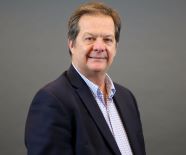
Respondent: Rick Stanford, vice president of Global Business Development, Textiles, Baldwin Technology Corp., St. Louis
TW: Can you comment on the quantity and quality of visitors at your booth during the show, and the countries and regions where the visitors came from?
Stanford: We had more than 300 visits with the vast majority high quality contacts. As you can imagine a concentration of visitors came from Pakistan, Bangladesh, India, Turkey, Western Europe. We heard that some Indians were not able to get their visas so traffic from India could have been better. We saw good traffic from Taiwan and Japan. I would say the Americas is about what you would expect. Not so many visitors, but very serious opportunities.
TW: Based on customers’ interests and questions during the show, do you see any overarching trends? In your sector, what impact does sustainability have?
Stanford: In dyeing and finishing, sustainability and lowering the carbon footprint is the most important. Our technology’s main objectives are in these areas. We believe that this ITMA was sustainability front and center and then mills were focused on how to improve their processes more than purchasing more production capacity. During COVID there was a big push for more production as people were working from home and looking for more comfortable, casual clothes. Now the mills have the capacity and want to be more sustainable with a lower carbon footprint.
TW: What is the appetite for investing? Is U.S. interest apparent?
Stanford: Asia is looking to invest. We actually sold machines at the show. For our technology, the U.S. is interested, but quite honestly, because of the poor business conditions, the U.S. mills are holding off on investment. It really has not improved since the show.
TW: Would you say ITMA 2023 was an overall success for your company?
Stanford: Overall, it was the best ITMA I attended. I have attended each ITMA since Hanover in 1991. Baldwin has the products that the market is looking for and that helps. It was a well organized very successful exhibition. Many times exhibitions are a bit disappointing when you consider the money and people resources that are required. With this show, it definitely paid dividends!
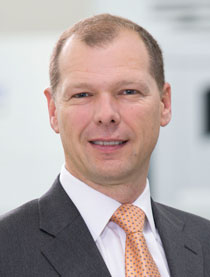
Respondent: Stefan Engel, CEO, Trützschler USA, Charlotte, N.C.
TW: Can you comment on the quantity and quality of visitors at your booth during the show, and the countries and regions where the visitors came from?
Engel: We were very pleased with the quantity and quality of our discussions. The fact that the total number of visitors at this ITMA was higher than at the ITMA 2019 was also reflected at our stand. We had a very good response at our booth and recorded more than 1200 “qualified” conversations with visitors from all over the world.
TW: Of the machines/technology your company had on display, what drew the most attention?
Engel: Trützschler Spinning experienced a strong demand for its recycling solutions and the new cooperation with the Turkish company Balkan Textile Machinery INC.CO. This has made us the first full liner in the spinning preparation and recycling sector, as our product portfolio is now completed by Balkan’s cutting and tearing machines. Further, the next generation card TC 30i attracted a lot of attention. It achieves the best quality from any raw material thanks to an enlarged cylinder diameter and a higher number of active flats. Another highlight was our 12-head high-performance comber TCO 21XL that maximizes productivity by 50 % without sacrificing quality – while saving 25 % space. A special topic for Trützschler Nonwovens was the presentation of customized needle-punching solutions together with the Italian company Texnology S.l.r.
TW: Based on customers’ interests and questions during the show, do you see any overarching trends? In your sector, what impact does sustainability have?
Engel: Sustainability continues to be one of the biggest trends and it has a big impact. Our customers are always looking for cost-effective solutions to make our industry more sustainable. As a fabric manufacturer you have a lot of textile waste. You can use this waste as a raw material to make new yarn, for example. In general, using textile waste as a raw material can be an attractive business model if you can achieve a certain level of quality. Our spinning preparation machines achieve this level.
TW: What is the appetite for investing? Is U.S. interest apparent?
Engel: Most investments of our U.S. customer base increased between late 2020 and topped mid-2022. As delivery times increased dramatically over the same period due to supply chain issues, some customers began to place few cancellations in mid-2023 as the economy slowed down. Currently there’s a little appetite for investment as recession fears linger and companies cut CAPEX in 2024.
TW: Are you seeing manufacturers shift their product mixes? Are they moving toward more innovation or are investments more focused on improved efficiency and lowering costs?
Engel: Product mixes have shifted from cotton to poly-cotton over the past few years. However, processing types have changed dramatically in the recent past. Ring spinning is becoming less prevalent in the United States (labor intensive) and is moving to areas such as Central America. OE and MVS remain but will not increase in production in the next few years. Most new projects are driven by lowering the cost per pound by reducing labor requirements and improving efficiencies.
TW: Do inflation and higher interest rates create investment headaches? Do you think the United States will avoid a recession?
Engel: Elevated inflation and high interest rates have always a dampening effect on investment. The housing market is the biggest loser in such scenarios that weigh on consumer sentiment. As energy/fuel and food prices rise, consumers allocate less disposable income to textiles/apparel and other nondurable goods. With job security still relatively high, consumer confidence is strong. The likelihood of a recession at this point is low, as the overall economy is strong and inflation is trending down. If the FED does not continue to raise interest rates, it would be a sign that we will see some cooling in the next 12 months, but nothing close to a recession.
TW: Are there any roadblocks, such as high energy prices, holding manufacturers back from investing in new equipment and technologies?
Engel: The most significant investment roadblocks on a global scale are (1) volatile demand in downstream textile consumption, (2) availability of qualified staff to operate the machines effectively, (3) maintaining cost efficiency and profitability as operating costs (e.g., labor costs) increase. This last factor in particular is proving to be a common barrier for the U.S., as clients continue the trend of investing in Central America to reduce operating labor costs (electricity costs are lower in the U.S. than in Central America), resulting in a shift of production capacity rather than expansion for the American market itself.
TW:What are your thoughts on the impact of artificial intelligence (AI) in textile manufacturing and the technology your company designs/supplies?
Engel: In textile manufacturing, AI enables the intelligent analysis of large amounts of data by combining information from different sources to gain new insights. AI can optimize defect detection and product quality, as well as realize predictive maintenance, which will provide our customers with crucial competitive advantages in the future, and significant cost savings per kg produced. In particular, machine learning supports predictive modeling such as quality control, demand forecasting and predictive maintenance.
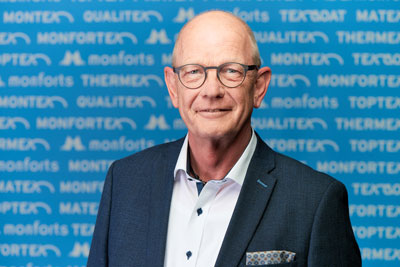
Respondent: Gunar Meyer, managing director, Monforts
TW: Can you comment on the quantity and quality of visitors at your booth during the show, and the countries and regions where the visitors came from?
Meyer: There was an unexpectedly high number of visitors from all over the world at this year’s ITMA, and especially more customers from Latin America than expected. Generally, all textile manufacturing regions were well represented.
TW: Of the machines/technology your company had on display, what drew the most attention?
Meyer: There was a lot of interest in the Montex®Coat, the latest addition to our range of technologies which we displayed in Milan.
The Montex®Coat can serve a very diverse number of markets and enables full PVC coatings, pigment dyeing or minimal application surface and low penetration treatments, as well as solvent coatings. Knife coating, roller coating or screen printing can also all be accommodated with this system.
As such, it provides the ultimate in flexibility and the ability to switch quickly from one fabric run to the next, without compromising on the economical use of energy or raw materials.
Many refinements have been made to the Montex®Coat in the past few years, resulting in higher coating accuracy and the resulting quality of the treated fabrics. A number of advanced new improvements were introduced in Milan, including automatic edge limiters for immediately adapting to new coating widths and a new and simplified hand-held control device. These save considerable time in setting up the machine and ensuring consistent production.
TW: Based on customers’ interests and questions during the show, do you see any overarching trends? In your sector, what impact does sustainability have?
Meyer: Monforts Montex stenters for processes such as drying, stretching, heat-setting and coating are already the industry standard for the fabric finishing industry, providing a number of advantages in terms of production throughput and especially in energy efficiency and resource savings.
As finishing is a particularly energy-intensive part of the textile production chain, it is exactly where palpable results can be achieved and we have developed a wide range of energy-saving measures.
This not only includes state-of-the-art machine chamber insulation, but also heat recovery systems. The Monforts Universal Energy Tower, for example, is a free-standing air/air heat exchanger that achieves energy savings of up to 25 percent.
The ECO Booster heat recovery system with integrated automatic cleaning is meanwhile directly integrated into the chamber design of the Montex stenter and enables energy savings of up to 35% depending on the application. One ECO Booster module is sufficient for stenter ranges with up to eight chambers.
Both the ECO Booster and the Energy Tower can be retrofitted to existing ranges, in order to make production more resource-efficient and economical, yet without having to invest in a new machine.
TW: What is the appetite for investing? Is U.S. interest apparent?
Meyer: Prior to ITMA 2023, we were expecting this year to be challenging, given the generally gloomy analyst forecasts for the immediate future of the textile industry, so the number of new sales being announced at ITMA 2023 and the upbeat atmosphere took us by surprise.
We have sold a number of machines to companies in Mexico and other Latin American countries who are primarily manufacturing for the U.S. brands. Established manufacturers in the USA are meanwhile looking to replace older installations in order to benefit from all of the latest developments and increased productivity in high-level finishing.
TW: Do recent orders point to any evidence of nearshoring and reshoring in the Western Hemisphere?
Meyer: We have certainly seen more investments within Europe during the past two-to-three years, in France, Germany, Spain, Italy and the UK. Where nearshoring and reshoring are happening, it is generally in the upstream fields of digital decoration, printing and garment making-up — the final stages of the supply chain.
TW: Are there any roadblocks, such as high energy prices, holding manufacturers back from investing in new equipment and technologies?
Meyer: If anything, high energy prices are having the opposite effect and encouraging investment. For our customers, energy costs can account for up to 70% of production costs, so there is great demand for ways of saving money. This also helps in terms of global warming and reducing carbon footprint, of course.
We see the energy crisis of the past two years as an opportunity because it is leading to an energy consumption rethink in the textile industry.
At ITMA 2023, for example, the two seminars we organized on green hydrogen as a new energy source for textile finishing were very well-attended.
Monforts is currently leading a consortium of industrial partners and universities in the three-year WasserSTOFF project, launched in November 2022, to explore all aspects of this fast-rising new industrial energy option.
The target of the government-funded project is to establish to what extent hydrogen can be used in the future as an alternative heating source for textile finishing processes. This will first involve tests on laboratory equipment together with associated partners and the results will then be transferred to a stenter frame at the Monforts Advanced Technology Center (ATC) in Germany.
Green hydrogen’s potential as a clean fuel source is tremendous, but there is much we need to explore when considering its use in the textile finishing processes carried out globally on our stenter dryers and other machines.
TW: Do you have any forward-looking thoughts as you digest ITMA 2023 and look ahead to Hanover in 2027?
Meyer: The textile industry is preparing for the future and wants to contribute to a general reduction in CO2 emissions.
At ITMA 2027 in Hannover we will see what further responses to this major challenge have been realised. In Milan this year it was just good to be back at a physical show and meet many colleagues and customers from around the world. This is something everybody has missed during the past few years.
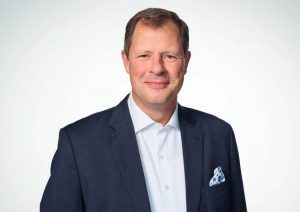
Respondent: Thomas Oetterli, CEO Rieter Group, Switzerland
TW: Can you comment on the quantity and quality of visitors at your booth during the show, and the countries and regions where the visitors came from?
Oetterli: We were blown away by both the quality and quantity of visitors to our booth. We welcomed many current and prospective customers from around the world, engaging in insightful and in-depth conversations around a shared passion: Rieter technology. In addition, our virtual booth enabled us to share the greatest moments with customers from around the world in real-time, from the unveiling event through to daily product launches.
TW: Of the machines/technology your company had on display, what drew the most attention?
Oetterli: Our innovations were well received. Our revolutionary double-sided air-jet spinning machine J 70 drew huge crowds. The machine boasts up to 200 autonomous spinning units and four robots, allowing production speeds of an unmatched 600 m/min.
Interest in our recycling offering is skyrocketing: Com4recycling is the Rieter system that enables customers to produce fine, high-quality ring and compact yarns from challenging raw material. This holds true even with a relatively high proportion of mechanically recycled cotton fibers.
TW: Based on customers’ interests and questions during the show, do you see any overarching trends?
Oetterli: All things automation and digitization sparked interest. ROBOspin, the industry’s first fully automated piecing robot, is highly coveted in times of tight labor markets. We are also seeing a growing appetite for digitization services like ESSENTIAL – Rieter Digital Spinning Suite. This indicates that there’s a generational shift underway to younger mill owners for whom digitization is a must-have. This aligns seamlessly with our vision to fully digitize spinning mills.
TW: What role does sustainability play?
Oetterli: For a long time, yarns were perceived as a commodity in the textile value chain. But recycling is changing all this, putting yarns at the forefront of the industry’s efforts to become more circular and fight climate change and biodiversity loss. When yarns made from recycled fibers reach acceptable quality levels, this also has positive impacts on downstream processes. Global brands are now turning their focus on spinning to understand the limitations and opportunities in processing recycled fibers. Our in-depth textile expertise is helping customers tap into a unique market opportunity.
TW: What is the appetite for investing? Is U.S. interest apparent?
Oetterli: The textile industry is highly cyclical. Markets across the globe have recorded a slowdown since the middle of last year and now a certain restlessness is palpable. Projects are being planned and everyone is waiting for the recovery, but it is hard to pinpoint when it will set in.
TW: Are you seeing manufacturers shift their product mixes? Are they moving toward more innovation or are investments more focused on improved efficiency and lowering costs?
Oetterli: In the spinning industry, competitiveness is the name of the game. This is why we design every new machine generation to improve efficiency in terms of energy and raw material consumption. Our latest machine generations are unbeatable in this respect. Highlights include the J 70, our sewing thread finish winder, Thread King, and our new card C 81, to name just a few.
TW: What are your thoughts on the impact of artificial intelligence (AI) in textile manufacturing and the technology your company designs/supplies?
Oetterli: We are incorporating artificial intelligence into existing machinery, a case in point is our card C 81, where we have added intelligent sensors which set the carding gap to the ideal size and monitor contaminant content in real-time.
The use of artificial intelligence will make a significant contribution to automation and process optimization and thus to improving sustainability in the textile industry. To expand our leadership in the field of industrial artificial intelligence, Rieter and the Johann Jacob Rieter Foundation are funding a professorship at ZHAW School of Engineering in Winterthur, Switzerland.
TW: Would you say ITMA 2023 was an overall success for your company?
Oetterli: It was a resounding success! ITMA 2023 confirms our strategy of advancing our systems approach by incorporating intelligence and engineering performance. Our technology helps customers to capitalize on more market opportunities and produce more economically.
January 2024




